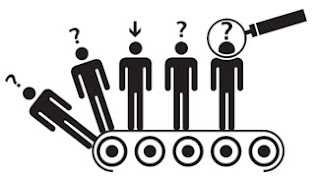We’ve all been there. After an extensive and thorough search for a new staff person, one candidate stands out.
This candidate has the right experience, solid qualifications, and a relevant work history, and she gave an impressive performance during the interview process. She said the right things, put forward some great ideas and generally presented very well.
You hired her… and three months later, you began to question your decision.
Find out why this keeps happening...
Dirty Little Secrets of HR
I got into work this morning and started plowing through my inbox. I saw an email from Readers’ Digest about an upcoming stories on what HR really thinks when it comes to the hiring process.
I seem to remember Readers’ Digest being this kind of mild little magazine, not particularly known for its cynicism, with regular features that ranged from corny jokes to stories in which someone had to fend off a deranged grizzly bear for four days. The stories were, ultimately, uplifting. So that’s the kind of expectation I had when I took a peek into the upcoming stories.
After the peek? I think I’d rather take my chances with the deranged grizzly bear. It’s not that I didn’t know all this, I just didn’t think HR would be so proud of it. Click below for some examples:
Examples of HR's dirty little secrets
I seem to remember Readers’ Digest being this kind of mild little magazine, not particularly known for its cynicism, with regular features that ranged from corny jokes to stories in which someone had to fend off a deranged grizzly bear for four days. The stories were, ultimately, uplifting. So that’s the kind of expectation I had when I took a peek into the upcoming stories.
After the peek? I think I’d rather take my chances with the deranged grizzly bear. It’s not that I didn’t know all this, I just didn’t think HR would be so proud of it. Click below for some examples:
Examples of HR's dirty little secrets
The Courage to Hire Differently
Why is it that, even when we know that a particular habit isn’t serving us well and may even be harming us, we still resist doing what we know makes logical sense to avert the inevitable?
What is it about the human condition that allows us to rationalize the patently illogical, and even the irresponsible? This dysfunction shows up in our own little ‘vices’, in the way we treat the world around us, and in the organizations we lead.
For more than a decade, Gallup and a host of other global consulting firms have been reporting on levels of engagement. We’ve all seen them – and they are dismal: less than 30% of the population is fully engaged in their work; another 20% are fully disengaged, and in excess of 50% are in some stage of disengagement.
These statistics haven’t improved over the last decade and a half; if anything they have worsened. And they are reinforced by other measures that point to something fundamental in organizations being critically broken:
Click Here to Read More
Subscribe to:
Comments (Atom)


